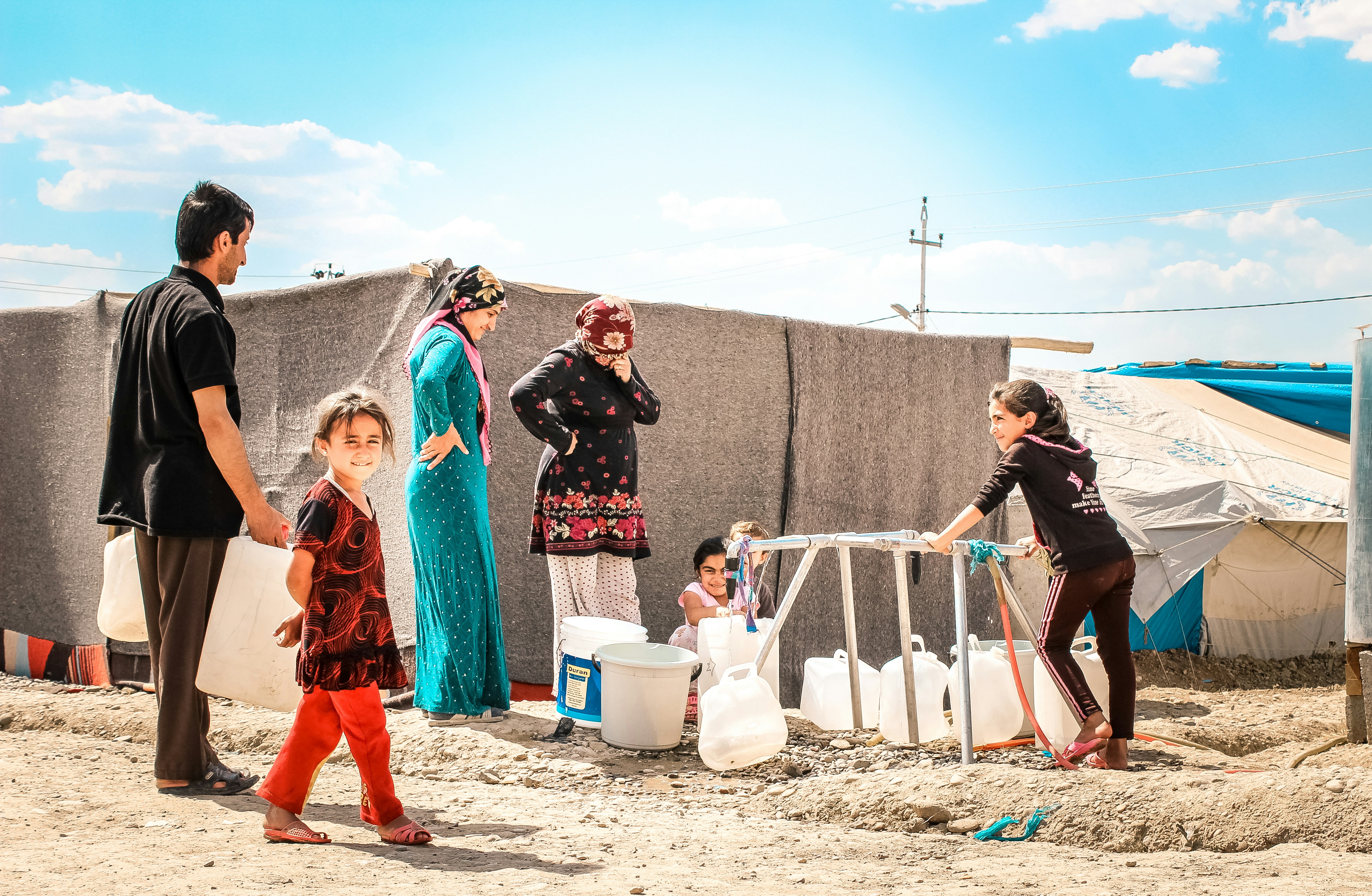Did Pakistan Shoot Down Five Indian Fighter Jets? A Detailed Analysis

Photo by Jonathan Ridley on Unsplash
Introduction
The ongoing conflict between India and Pakistan has been characterized by a series of military confrontations, political tensions, and heightened rhetoric. This complex relationship, shaped by historical grievances and territorial disputes, has been particularly fraught in recent years. The claims made by Pakistan regarding the shooting down of five Indian fighter jets have drawn international attention and scrutiny. Such assertions have the potential to escalate tensions further, necessitating a thorough analysis of the events surrounding these incidents.
In the backdrop of this fraught relationship, incidents involving airspace violations and military engagements have become increasingly frequent. The significance of Pakistan’s claims lies in their implications for regional stability, as well as their influence on domestic perceptions within both nations. The assertion that multiple Indian jets were shot down on May 7 serves not only as a statement of military capability but also as a narrative aimed at bolstering national pride and unity. Conversely, India has vehemently denied these claims, leading to a war of words that can inflame the already simmering tensions.
Understanding the specifics of the recent conflicts is imperative for grasping the broader context of India-Pakistan relations. It is essential to consider the historical precedents, military capabilities, and geopolitical factors that underpin the current dynamics. The clouds of conflict loom large over the region, and each exchange, whether verbal or military, compounds the complexities of the situation. As we delve deeper into the events of May 7 and the claims of aerial engagements, it becomes evident that the implications extend far beyond the battlefield, encompassing diplomatic relations and the stability of South Asia as a whole.
Background of the Conflict
The long-standing rivalry between India and Pakistan has its roots in the partition of British India in 1947, which led to the emergence of two independent nations: secular India and Islamic Pakistan. The initial discord was fueled by territorial disputes, particularly over the princely state of Jammu and Kashmir. The accession of Kashmir to India ignited the first Indo-Pakistani war in 1947-48, ultimately resulting in the division of the region along the Line of Control, a situation that has remained contentious through subsequent decades.
Over the years, multiple wars and skirmishes have punctuated the India-Pakistan relationship, each exacerbating existing tensions. Key conflicts include the 1965 war, prompted by another flare-up in Kashmir, and the 1971 war, which resulted in the secession of East Pakistan and the creation of Bangladesh. The nuclearization of both countries in the late 20th century added a complex layer to their rivalry, introducing a deterrent effect yet simultaneously increasing the stakes of any potential military engagement.
In the 21st century, incidents of violence, such as the 2001 Indian Parliament attack and the 2016 Uri attack, have further escalated military responses. Both nations have seen significant military mobilization and a series of confrontational exchanges. The 2019 Pulwama terrorist attack, where a suicide bomber killed 40 Indian paramilitary personnel, elicited a vigorous response from India, leading to airstrikes on what India claimed were terrorist camps in Pakistan. This operation prompted aerial encounters and has been cited as a pivotal moment in the recent escalation, highlighting the fragility of peace in the region.
As of May 7, the situation remains tense and volatile, characterized by military posturing and ongoing skirmishes, especially along the LoC. In this environment, the grey area of information warfare and propaganda plays a significant role, making it essential to analyze incidents with a discerning eye to understand the implications of the unfolding events. The current standoff is a continuation of a complex historical narrative that has, sadly, become a defining feature of India-Pakistan relations.
What Pakistan Claims
In recent assertions, Pakistani officials have proclaimed that the nation’s air force successfully downed five Indian fighter jets during a significant aerial confrontation. This claim, broadcasted through various media outlets and reinforced by military spokespersons, centers on what they describe as a decisive show of military prowess amid rising tensions with India. According to Pakistan’s military narrative, the aerial engagement unfolded in a strategic region identified as a point of dispute, which has historically been a flashpoint in India-Pakistan relations.
The types of aircraft involved in these hostilities have been focal points in Pakistan’s claims. Specifically, they allege that several advanced Indian fighter jets, likely to include the Sukhoi Su-30MKI and perhaps the Mirage 2000, were targeted and shot down. As per the Pakistani military’s technical data, the engagement purportedly took place at an altitude conducive for aerial combat, where the enemy’s maneuverability could be compromised. This assertion not only seeks to showcase India’s vulnerabilities but also emphasizes the operational capabilities of Pakistan’s air force.
Moreover, Pakistani government officials have provided what they characterize as detailed accounts of the confrontations, outlining the tactical maneuvers executed by their forces. These statements aim to bolster national morale and portray Pakistan as a formidable opponent in the ongoing geopolitical landscape. The rhetoric emphasizes advancements in their aerial defense systems, suggesting that the aircraft downed were attempting to breach Pakistani airspace during a high-stakes military operation. Given the sensitive nature of military engagements, these claims have sparked extensive discourse and skepticism, illustrating the complex dynamics of claims surrounding India-Pakistan military confrontations.
India’s Standpoint
The ongoing tensions between India and Pakistan have often escalated into allegations and counter-allegations. Amidst these rising tensions, Pakistan claimed to have shot down five Indian fighter jets, which prompted a strong diplomatic and military response from India. The Indian government, along with military leaders, moved quickly to address these claims, denying the allegations and asserting that no such loss of aircraft had occurred.
Official statements from the Indian government underscored the nation’s commitment to maintaining air superiority and preserving national security. The Ministry of Defence, in a press release, called the claims made by Pakistan “unfounded” and reiterated the high standards of operational readiness of the Indian Air Force (IAF). This strong denial was part of a broader strategy that not only sought to deflect any negative perceptions but also to reassure the public regarding the capabilities of its armed forces.
Furthermore, military sources provided additional insights, categorically refuting any assertions of lost aircraft during skirmishes. This was complemented by the IAF’s public relations campaign aimed at dispelling rumors and fostering a sense of confidence among citizens. Media outlets in India reported extensively on the operational protocols followed by the military during these confrontations, emphasizing the disciplined and calculated approaches that thwarted potential threats.
The Indian media played a significant role in shaping the narrative. Many outlets took a skeptical view of the Pakistani claims, often questioning the veracity of the evidence presented by Pakistan. Analysts and commentators in India dissected the claims, assessing their implications for national security, and urging the government to maintain a vigilant stance in the face of Pakistani provocations. This response reflected India’s strategic communication that aimed to counter misinformation while strengthening public confidence.
International and Local Perspectives
The conflict between India and Pakistan has elicited significant attention from both local and international media, each providing distinct narratives that reflect their perspectives. Local coverage tends to emphasize national pride and security, often portraying the events in a manner that resonates with domestic sentiments. In contrast, international media reports frequently adopt a more analytical approach, striving to maintain objectivity while examining the broader implications of such military engagements.
Multiple reports have emerged regarding the claims made by Pakistan about shooting down five Indian fighter jets. Local Pakistani news outlets celebrated the military’s assertion as a significant achievement, highlighting a sense of national victory. Eyewitness reports from these sources contributed to narratives suggesting that the incidents occurred in specific regions, often corroborated by local officials. However, the lack of independent verification raises questions about the accuracy of these claims.
On the other hand, international media outlets tend to approach the analysis with caution. They emphasize the need for corroborative evidence, often juxtaposing the claims from both sides. Various reports indicate discrepancies in the number of jets downed, with a significant portion of international coverage focusing on the reactions from influential global powers regarding the India Pakistan conflict. Moreover, these sources often reference satellite imagery and social media analyses to ascertain the locations of alleged crash sites, seeking to provide a more comprehensive understanding of the situation.
This juxtaposition of local and international reporting highlights a critical aspect of the conflict: narrative construction. While local news may fuel nationalistic fervor, international perspectives aim to contextualize the events within a larger geopolitical framework. Therefore, the nuances in reporting on the India Pakistan situation underscore the complexities of media portrayals amidst a highly volatile political landscape.
Implications of the Claims
The claims made by Pakistan regarding its ability to shoot down five Indian fighter jets have far-reaching military and political implications. At the core of these assertions lies the potential shift in regional security dynamics between India and Pakistan, which are historically tense neighbors with a history of conflict. Such claims can be interpreted as an attempt by Pakistan to enhance its deterrent capability, thereby influencing India’s military posture and operations within the region. Consequently, the result may be an escalation in defensive measures from India, leading to an arms race that further endangers regional stability.
International perceptions of both countries are equally affected by these assertions. For Pakistan, a successful demonstration of military prowess could bolster its standing among allies and strengthen its negotiating position on global platforms. Conversely, India’s failure to counter these claims effectively could lead to questions regarding its military credibility and capability among the international community. The dynamics become more complex given the established alliances and geopolitical interests of external powers in South Asia, further influencing the narrative surrounding the India-Pakistan relationship.
In the longer term, these claims may strain diplomatic relations between India and Pakistan. With the sensitive nature of military assertions like these, state media in both countries often amplify nationalistic sentiments, complicating any potential for dialogue or conflict resolution. Public perception is also critical, as such claims can ignite anger and support for military action among the populations of both nations. Therefore, the implications of these military assertions have the potential to entrench the divide between India and Pakistan further, making peaceful resolutions increasingly elusive. This spiraling of tensions could derail existing diplomatic frameworks aimed at fostering cooperation and stability.
Expert Opinions and Analysis
The recent claims made by Pakistan asserting the downing of five Indian fighter jets have sparked intense discussions among defense analysts and military experts. To evaluate the veracity of these claims, it is essential to consider several factors, including strategic military capabilities, the operational environments of both nations, and the historical context of India-Pakistan aerial engagements. A consensus among many experts suggests that while it is feasible for Pakistan to achieve such an outcome, the reality is significantly more complex.
Military analysts highlight that India possesses advanced air superiority and a well-trained air force, which includes combat aircraft such as the Sukhoi Su-30MKI and the Tejas. These assets, combined with robust command and control systems, typically present a formidable challenge to adversarial forces. On the other hand, Pakistan operates a diverse range of aircraft, including seasoned models such as the F-16, which serve as its backbone for aerial defense. Experts argue that while Pakistan’s military capabilities should not be underestimated, consistently achieving victories over India’s modernized fleet remains a concern.
An important point raised by military experts is the significance of situational awareness and intelligence during any aerial confrontation. India’s advanced radar and surveillance technologies provide it a strategic advantage in identifying and responding to threats. Therefore, the mere possibility of downing five Indian jets, as claimed by Pakistan, raises questions regarding the situational context and operational readiness during the purported engagements. Furthermore, the broader implications of such claims on regional air power dynamics cannot be ignored, as a public stalemate impacts military morale, national security policies, and international perceptions.
In evaluating the claims from both Pakistan and India, it is clear that expert insights play a crucial role in understanding the actual air combat scenarios. The interplay between technological advancements, strategy, and geopolitical concerns illustrates the complexities of aerial dominance in the India-Pakistan context. Such analyses not only illuminate the specific claims but also shape the future trajectory of military operations in the region.
What’s Next? Future Scenarios
The tensions between India and Pakistan have historically been characterized by periods of escalation and subsequent de-escalation. Following the reported incident on May 7, where claims of India Pakistan engaging in aerial confrontations surfaced, it is crucial to consider the potential future scenarios that could unfold. Both nations have significant strategic military considerations that may dictate their next steps.
Firstly, the likelihood of further military escalations cannot be discounted. The interplay of domestic political pressures and nationalistic sentiments in both countries can lead to a cycle of retaliation. In India, there is a growing public demand for a robust response to perceived aggressions, which might push governmental authorities to adopt a more aggressive military stance. Conversely, Pakistan, bolstered by its strategic alliance with China, may also feel pressured to demonstrate its military capabilities, particularly given the ongoing geopolitical tensions in the region.
Additionally, it is essential to consider public sentiment in both nations. Rising nationalism can complicate diplomatic efforts and may result in hardline approaches from political leaders. However, this could also lead to strategic restraint if leaders recognize the catastrophic consequences of prolonged military engagements. The ever-looming threat of nuclear conflict means that both India and Pakistan must tread carefully, weighing the costs of aggression against the benefits of dialogue.
In terms of international response, pressure from global powers, including the United States and member nations of the United Nations, may play a role in de-escalating tensions between India and Pakistan. Ongoing diplomatic interventions could provide a viable path towards conflict resolution, reducing the probability of armed confrontation. Future engagement strategies could pave the way for discussions on critical issues, moving both countries toward a more peaceful coexistence.
Ultimately, the future remains uncertain. The decisions made by both nations will heavily depend on evolving domestic and international circumstances, and their adaptability to changing geopolitical dynamics will be paramount in navigating the complexities of the India Pakistan relationship.
Conclusion
In examining the complex events of May 7, it becomes clear that the narrative surrounding the India Pakistan military encounters remains fraught with varying interpretations. On one hand, Pakistani authorities assert that their forces successfully shot down five Indian fighter jets, presenting evidence to support their claims. Conversely, the Indian government has categorically denied these reports, maintaining that no such incidents took place, which highlights the deep-seated divisions and mistrust between the two nations.
This situation underscores the critical importance of transparency and accurate communication in international relations, particularly concerning military confrontations. The differing accounts from both India and Pakistan serve as a reminder of the broader geopolitical tensions that often characterize the relationship between these neighboring countries. As misinformation can lead to escalated tensions and potential conflict, it is vital for both parties to engage in dialogue that prioritizes facts over rhetoric.
Furthermore, the implications of these claims are significant not only for India Pakistan relations but also for regional stability in South Asia. As military capabilities continue to advance, the potential for miscalculations increases, necessitating robust diplomatic efforts to avert misunderstandings that could spiral into larger confrontations. Therefore, both nations must commit to fostering a climate of trust through constructive engagement and conflict resolution strategies.
Ultimately, while the events of May 7 may seem like a singular incident, they encapsulate the ongoing challenges that both India and Pakistan face in managing their defense relationships. Continued diplomatic efforts will be essential in ensuring that such scenarios do not recur and that peace remains a priority for both sides in their quest for stability and security.







